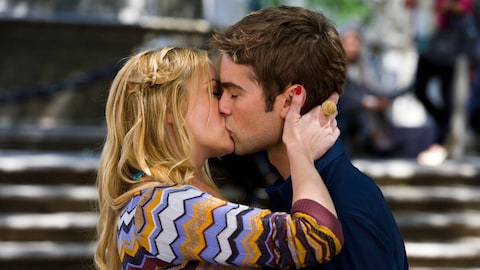What's with the hickeys and why do we love them so much?
Who knew a bruise could be so hot?

How old were you when you learned what a hickey was? I was a pre-teen watching That '70s Show. I remember the scene so vividly—Donna and Eric (for the uninitiated—the show’s leading couple) had just started dating and she left a huge blueish-purple bruise on his neck. It was hard to miss more so when Eric’s sister Laurie called it out at their family breakfast table and proceeded to tell him that hickeys lead to nastier things.
For reasons we can guess, hickeys are considered to be symbols of lust and overtly sexual eagerness among hormonal teenagers, and you dare be so vulgar as to roam around freely with one. It’s why there are so many viral hacks and tricks on getting rid of the mark as soon as possible (Side note: the icy spoon and twirling toothbrush are the way to go). However, once I grew older and embarked on a dating journey of my own, I realised all of this was one big misconception. It’s not about exhibitionism or “marking one's territory” but about the fact that you can be so aroused by someone that you want a physical memento of that passion. What about that doesn’t sound lip-smackingly delicious? Although, I do understand that not everyone might share my opinion. For a lot of you, hickeys might be an inconvenience or a sign of immaturity. But let’s face it, at one point or another, we’ve all enjoyed giving and receiving them. They are called ‘love bites’ for a reason.
How does a hickey happen?
The biology behind a hickey is fairly simple. Don’t stop reading. We aren’t going to ruin a good thing with boring science, but if you find hickeys extremely hot, you need to know how they happen. When you use your lips to lick, suck or bite (the pressure varies on what you’ll are into) on your partner’s erogenous zones you’re create a vacuum that causes the capillaries under the skin to burst, leaving behind a bruise. It’s that simple. And we already know (through good experiences and bad) that the longer you spend painting the hickey, the more prominent it is and the longer it will take to heal.
Why do giving and receiving hickies feel so good?
For people (primarily those in their late teens or early 20s) who are just dipping their toes into the ocean of sexual acts, hickeys occur often because they get carried away in the moment’s pleasure. However, it’s more deliberate as we venture further into that ocean and learn about our own pleasure points. Then it’s about a raw passion between two people ready to devour each other. And of course, if possessiveness is a trait that turns you on (either your partner’s or your own), that’s just a bonus.
However, hickeys by themselves aren’t the source of arousal; they are just plain old bruises. It’s the act of giving or receiving them that sends shivers down our spine. More often than not, you’ll give a hickey on the neck, boobs, back, thighs, and any other location that turns your partner on. These erogenous zones are chock-a-block with nerve endings that send lightning-like sensations throughout the body. It’s worth walking about with a big bruise for a week, but that could just be my personal opinion as we established earlier.
Now that we know why receiving them can transport us to a universe of pleasure, let’s look at why being the giver is equally fun. Our lips are one of the most sensitive areas in the body. When we leave kisses on any part of our partner’s body, our brains are hopped up on oxytocin, dopamine, and serotonin. These are all feel-good hormones and neural transmitters that leave us with a sense of happiness, pleasure, and satisfaction. After all, these three are mainly responsible for the feeling we call ‘falling in love’.
However, love is not the primary emotion behind hickeys. Sometimes, it’s pure and basic lust, and there is nothing wrong with that. Having said that, it’s crucial to ask for consent before leaving your partner with a hickey masterpiece.